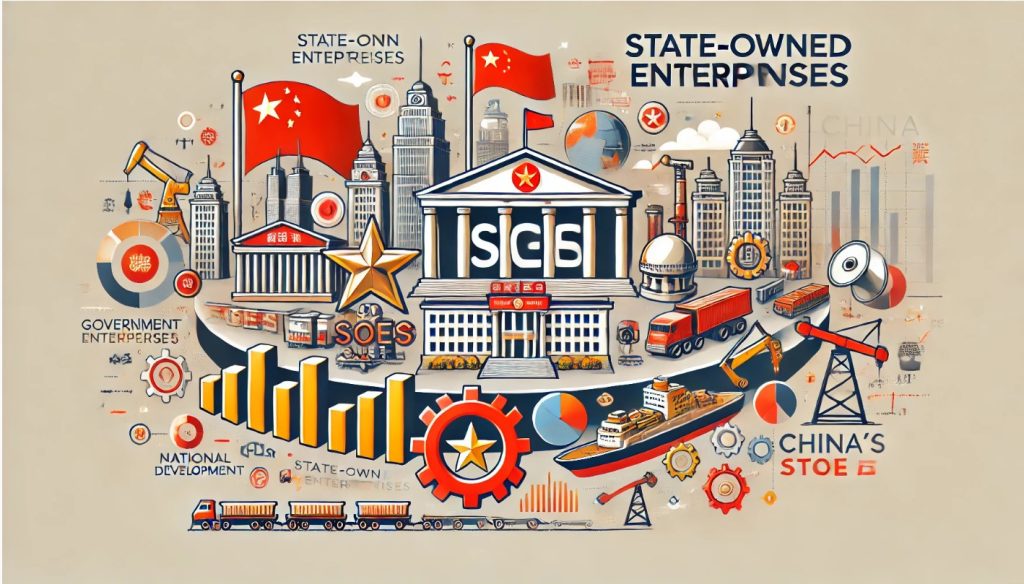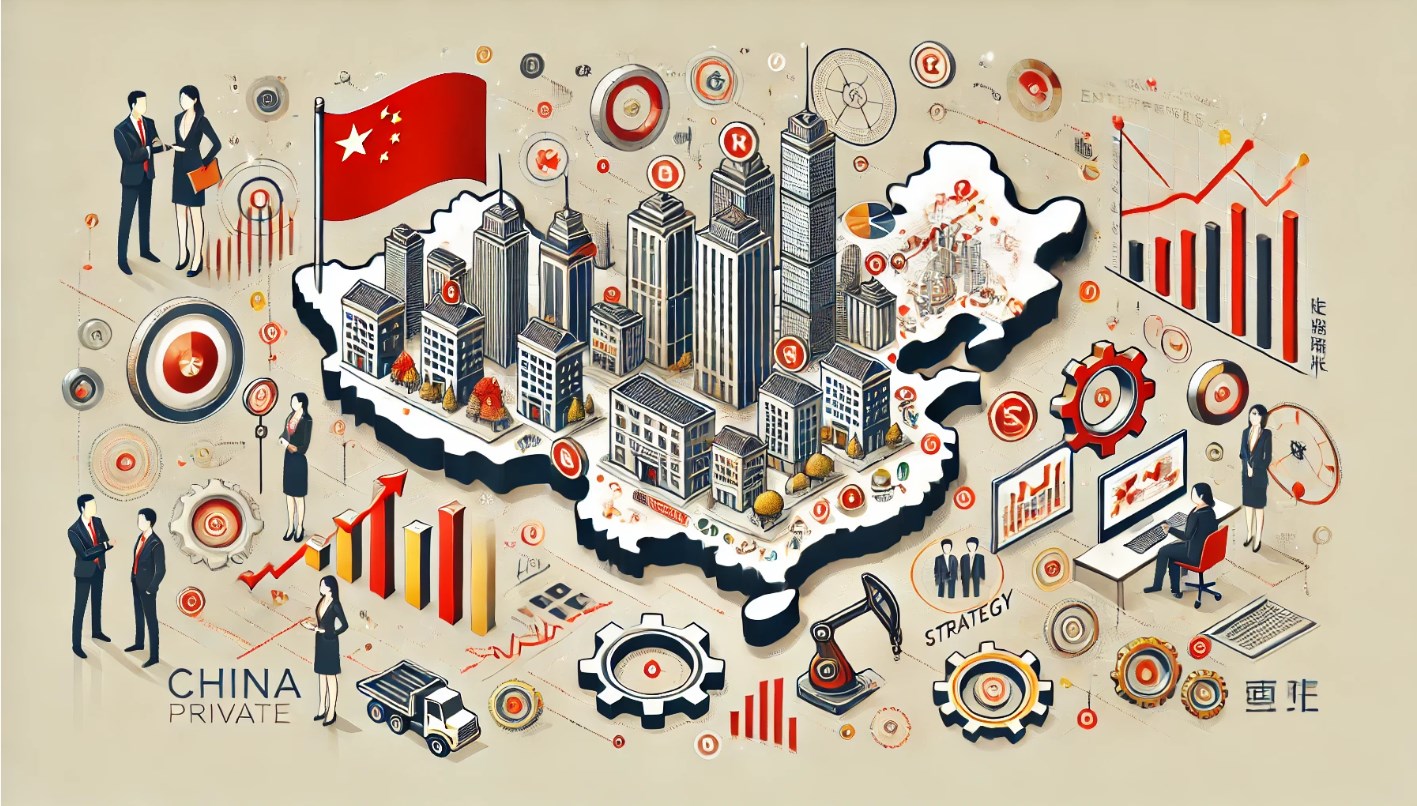State-Owned Enterprises (SOEs) are a critical component of China’s economic structure. These entities, which are owned and operated by the government, play a pivotal role in the country’s industrial and economic development. As the Chinese economy has rapidly expanded over the last few decades, SOEs have grown in both number and significance, influencing everything from national policy to global trade dynamics.
The Origins and Evolution of China’s SOEs
Early History and Formation
The concept of state-owned enterprises in China dates back to the early 1950s, when the government under Mao Zedong nationalized the country’s major industries. The establishment of SOEs was in line with socialist economic principles, where industries such as mining, heavy manufacturing, transportation, and energy were placed under state control. This period marked the start of China’s state-driven economic model, which would remain largely intact through the 20th century.
Under the Maoist regime, SOEs were primarily concerned with fulfilling central economic goals. The focus was on heavy industry and capital goods production, aligning with the country’s broader industrialization agenda. These enterprises were bureaucratic, inefficiency-ridden, and lacked competition, which contributed to a slow pace of technological development and low productivity.
Reform Era and Market-Oriented Changes
The real transformation of China’s SOEs began in the late 1970s with the economic reforms initiated by Deng Xiaoping. Beginning in 1978, China transitioned from a centrally planned economy to a socialist market economy. This shift involved allowing private businesses to emerge while maintaining strong control over key sectors through SOEs. A significant milestone was the introduction of the “open-door” policy, which facilitated foreign investments and the expansion of joint ventures.
However, SOEs were not immediately privatized. Instead, the government introduced a series of reforms aimed at improving their efficiency. In 1993, the central government began a process of restructuring the SOEs, which included corporate governance changes, introducing profit-driven incentives, and reducing the central government’s direct involvement in day-to-day operations. These reforms were intended to make SOEs more competitive and responsive to market forces while ensuring they remained aligned with national strategic goals.
By the early 2000s, the government had begun to focus on “specialization” within SOEs. These reforms culminated in the 2003 “state-owned enterprise law,” which formalized the role of SOEs in China’s economy and provided a legal framework for their operation in a market-driven environment. These changes allowed SOEs to diversify, grow, and play an increasingly significant role in both domestic and international markets.
SOEs in the Modern Chinese Economy
Today, China’s SOEs operate in a wide array of industries, including energy, telecommunications, banking, transportation, and aerospace. Despite market reforms, SOEs remain a central element of China’s economy, contributing significantly to employment, industrial output, and fiscal revenue. The government continues to maintain a strong influence over these enterprises, using them to implement national strategies and objectives.
The Structure and Governance of Chinese SOEs
Ownership and Control
In China, the ownership of SOEs is typically vested in the state, represented by the central government or local governments. The largest SOEs are directly controlled by the central government through the State-owned Assets Supervision and Administration Commission (SASAC). The SASAC is responsible for overseeing the operations of major state-owned enterprises, ensuring they adhere to national economic goals while also guiding their development and restructuring.
For enterprises that are not directly controlled by the central government, ownership may be delegated to provincial or local governments. In this case, the local governments are tasked with the governance and strategic direction of these firms. However, even in these instances, the central government often exerts significant influence over corporate decision-making, particularly in key industries deemed vital to national security and economic development.
Governance Model and Management
The governance structure of SOEs in China tends to reflect a hybrid model, blending elements of state control with aspects of corporate governance. On the one hand, these companies operate as modern corporations with boards of directors, executive teams, and performance targets. On the other hand, the government, through its various agencies, maintains a strong hand in appointing leadership and influencing key strategic decisions.
Most of China’s largest SOEs are led by a chairman or CEO who is appointed by SASAC or a local government entity. These leaders are often seasoned technocrats with close ties to the government, though there is increasing pressure to improve their business acumen and responsiveness to market forces. Over the years, there has been a gradual move toward professionalizing the management of SOEs, especially in the areas of finance, technology, and innovation.
While boards of directors may provide oversight in theory, the role of political oversight remains prominent. The government continues to exert influence through its control over key sectors of the economy and by appointing key figures to these boards, ensuring that strategic objectives align with national policies, such as the “Made in China 2025” initiative, which aims to make China a global leader in high-tech industries.
SOE Restructuring and Corporate Reforms
Over the past few decades, China has undertaken extensive SOE restructuring. One of the key reform strategies was to encourage greater market-oriented competition and promote the commercialization of state-owned businesses. The state has sought to reduce its involvement in the daily operations of many SOEs, allowing for greater autonomy and decision-making power.
Additionally, privatization and mergers have been key aspects of SOE reform. For instance, many smaller, inefficient SOEs have been privatized or closed, while larger firms have been merged or reorganized to create more competitive and efficient conglomerates. At the same time, SOEs in sectors considered vital to national interest, such as energy and telecommunications, have remained under state control or partially privatized, with the government holding significant stakes.
The Strategic Role of SOEs in China’s Economy
Economic Stability and National Security
State-Owned Enterprises are integral to maintaining economic stability and national security in China. The central government uses SOEs as instruments for achieving long-term strategic goals, including energy security, technological innovation, and industrial development. For example, SOEs in the energy sector, such as China National Petroleum Corporation (CNPC) and Sinopec, are critical to the country’s energy security and its ability to secure access to natural resources both domestically and abroad.
Similarly, SOEs play an essential role in key infrastructure projects that drive China’s economic growth. The massive scale of SOEs in construction, transportation, and telecommunications enables them to lead ambitious projects such as high-speed rail networks, smart cities, and the expansion of China’s digital economy. These projects align with China’s larger national objectives, such as modernizing its infrastructure and advancing technological innovation.
Furthermore, SOEs play a significant role in stabilizing employment levels. By controlling a large portion of the economy, SOEs provide jobs for millions of Chinese citizens, from factory workers to executives. This makes SOEs essential for social stability, as the government can leverage them to create employment opportunities in less developed regions of China, mitigate unemployment, and reduce potential social unrest.
Driving Innovation and Technological Development
In recent years, China has increasingly focused on using SOEs to drive technological innovation and upgrade its industrial base. The Chinese government has identified high-tech industries such as artificial intelligence (AI), biotechnology, aerospace, and semiconductors as critical areas for future growth. To advance these goals, China’s state-owned giants, including companies like China Aerospace Corporation (CASC) and China Electronics Corporation (CEC), have been tasked with spearheading innovations in these sectors.
The “Made in China 2025” policy initiative has been pivotal in directing SOEs to focus on achieving technological self-sufficiency. Through direct investment, research and development (R&D), and strategic acquisitions, SOEs have advanced China’s position in the global tech landscape. This is evident in industries such as telecommunications, where Huawei has become a global leader in 5G technology, and in electric vehicles, where BYD has grown to become one of the largest producers of EVs in the world.
Global Expansion and International Influence
China’s SOEs have increasingly expanded their footprint abroad, driven by the need to secure strategic resources, access new markets, and establish China as a dominant player in the global economy. The Belt and Road Initiative (BRI) is one of the most prominent examples of how the government has leveraged SOEs to extend China’s economic influence. Through BRI projects, Chinese state-owned firms have financed and constructed key infrastructure projects in countries across Africa, Asia, and Europe.
This expansion has brought mixed results. On the one hand, Chinese SOEs have gained access to vital resources, such as oil and minerals, and have established themselves as major players in global infrastructure. On the other hand, the growing influence of China’s SOEs has sparked concerns about debt traps, political influence, and a lack of transparency in the countries receiving Chinese investments.
Challenges Faced by Chinese SOEs
Inefficiencies and Bureaucratic Challenges
Despite extensive reforms, many Chinese SOEs continue to grapple with inefficiencies and bureaucratic hurdles. The reliance on state control and the lack of competition in some sectors have led to concerns about inefficiency, waste, and corruption. SOEs are often criticized for focusing more on meeting government quotas and maintaining employment levels rather than pursuing profit-maximizing strategies or responding effectively to market changes.
Additionally, there are concerns about the management style within SOEs. Many SOE executives are appointed based on political loyalty rather than managerial skill. This has led to concerns about mismanagement, lack of innovation, and suboptimal decision-making processes. Although there have been improvements in governance and transparency, SOEs are still subject to significant government intervention, limiting their autonomy in making key business decisions.
International Criticism and Trade Barriers
As Chinese SOEs have expanded their presence internationally, they have faced growing criticism and pushback from other nations. Many critics argue that China’s state-backed enterprises have an unfair competitive advantage due to their government subsidies, preferential financing, and ability to bypass market forces. In particular, concerns have been raised in the United States and Europe about the ability of Chinese SOEs to undercut private competitors, especially in strategic industries such as telecommunications, steel, and energy.
As a result, trade barriers and regulations have been introduced to protect local industries from what is seen as unfair competition. In some cases, countries have sought to limit or block the expansion of Chinese SOEs in sensitive sectors, citing national security risks and concerns about the potential for Chinese influence over critical infrastructure.
Transition to a Market-Driven Economy
One of the most significant challenges facing China’s SOEs is their ability to adapt to the changing global economic environment. As China increasingly integrates into the global market, SOEs must evolve from state-controlled giants to more competitive, market-driven entities. This shift involves improving corporate governance, increasing transparency, and embracing innovation while maintaining their role in achieving national policy objectives.
The pressure for SOEs to become more market-oriented is also being driven by the changing economic landscape within China. The rise of private enterprises and the growing importance of the digital economy mean that SOEs will have to compete with more nimble, innovative firms.







